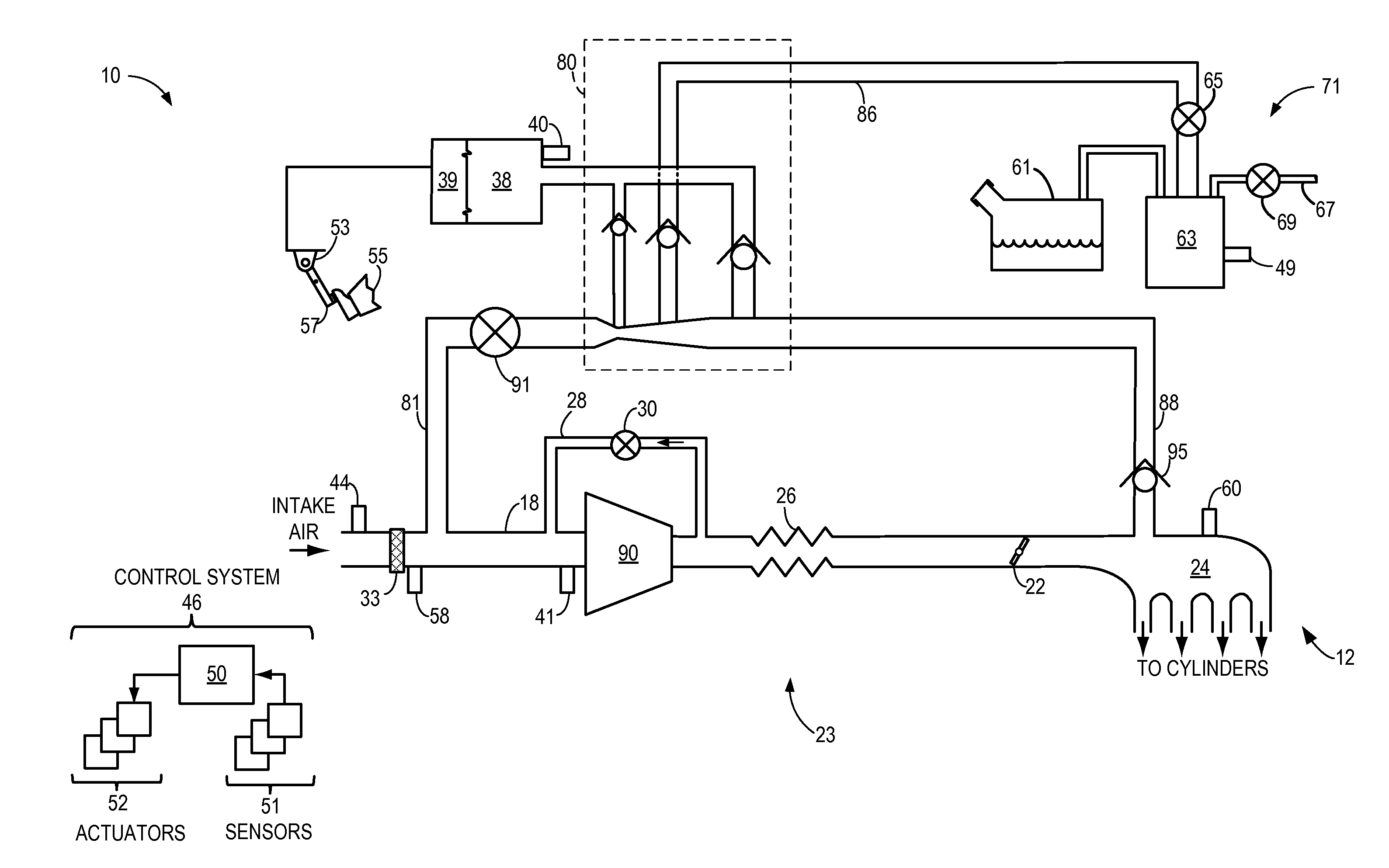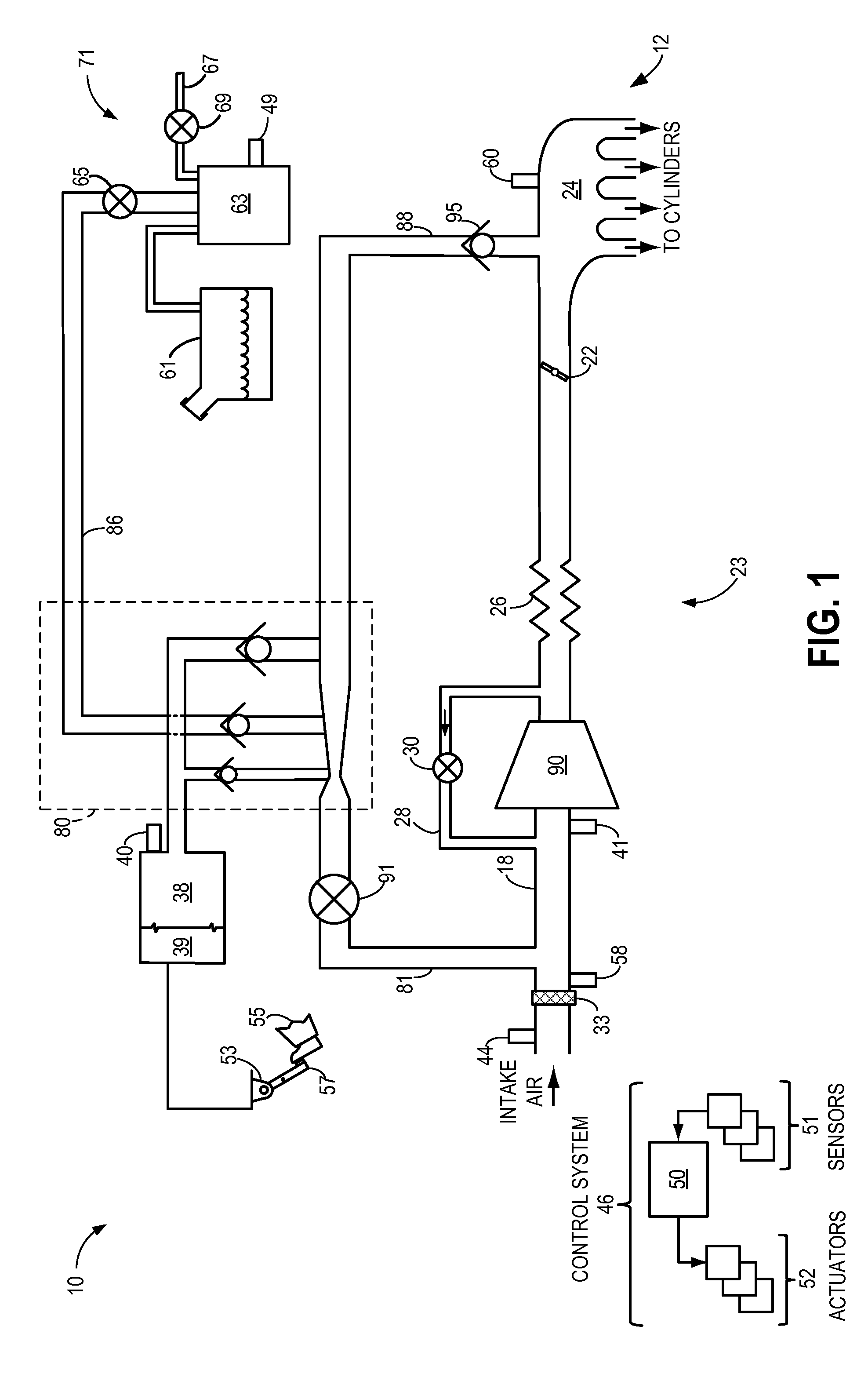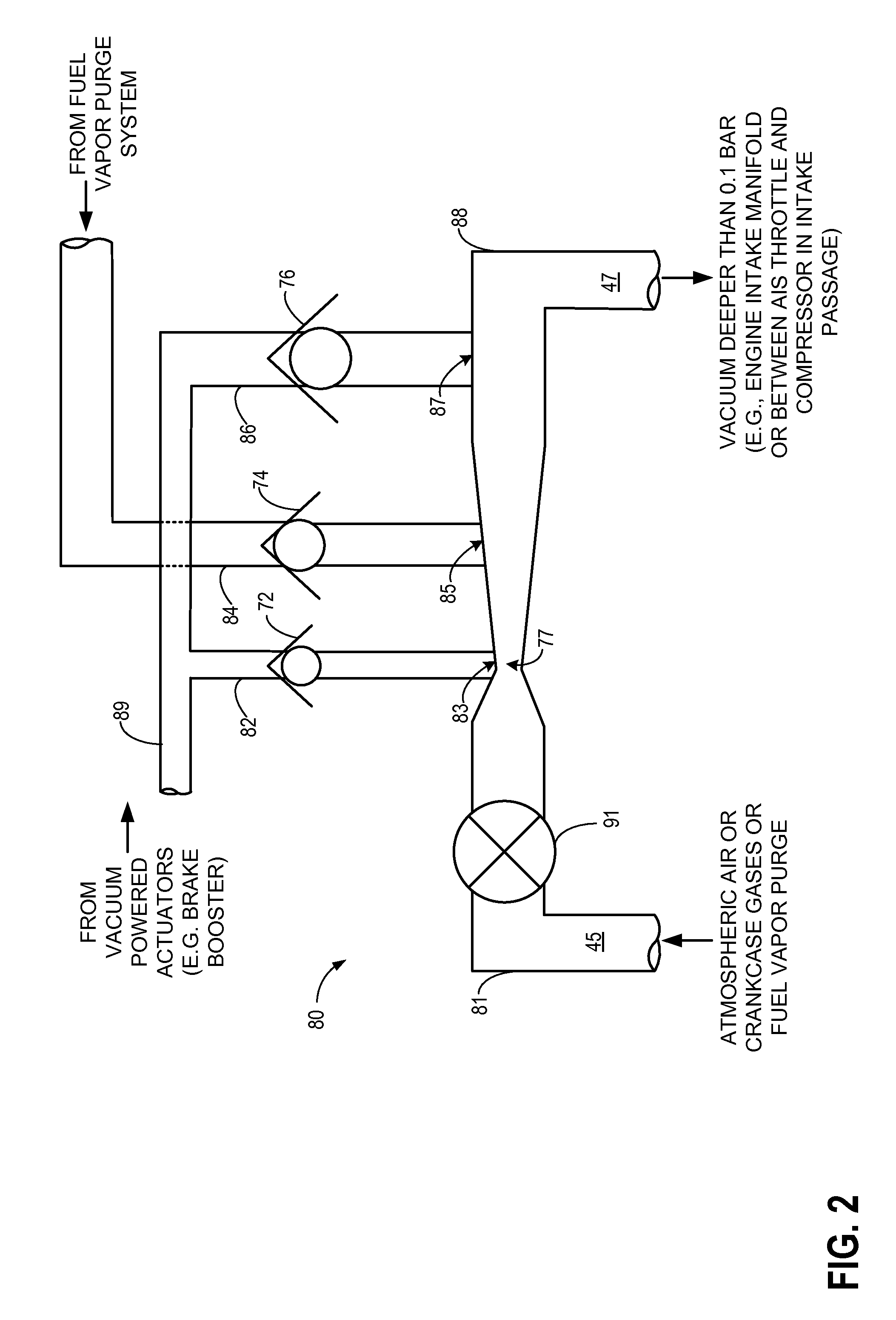Multiple tap aspirator
a vacuum-powered aspirator and tap-type technology, applied in the direction of machine/engine, combustion-air/fuel-air treatment, fuel intake silencer, etc., can solve the problems of vacuum reservoir vacuum loss, inability to use, etc., and achieve the effect of low-cost vacuum generation
- Summary
- Abstract
- Description
- Claims
- Application Information
AI Technical Summary
Benefits of technology
Problems solved by technology
Method used
Image
Examples
second embodiment
[0044]Further, in contrast to the embodiment of FIGS. 1-2 wherein a CIP sensor is arranged immediately upstream of the compressor, in the second embodiment a sensor 341 is arranged in intake passage 318 in the vicinity of a juncture of passage 388 and intake passage 318 (e.g., downstream of AIS throttle 331 and upstream of a juncture of bypass passage 328 and intake passage 318). Sensor 341 may provide a signal to controller 50 regarding the pressure at the motive outlet of aspirator 380.
[0045]Another difference between the first embodiment and the second embodiment involves the suction flow sources for aspirator 380. In the first embodiment, the suction passages for the throat tap and exit tube tap merge into a common passage which is coupled with vacuum reservoir 38 for use by vacuum actuators 39, whereas the suction passage for the diverging cone tap is coupled with a fuel vapor purge system 71. In contrast, in the second embodiment, all three suction passages merge into a common...
first embodiment
[0067]After 806, method 800 proceeds to 808. At 808, method 800 includes measuring and / or estimating the composition and amount of fluid exiting the mixed flow outlet of the aspirator. For example, the composition and amount of fluid exiting the mixed flow outlet of the aspirator may be estimated based on the flow levels in each suction tube of the aspirator determined at step 806 and further based on parameter values detected by various sensors. In the context of the first embodiment, where suction flow entering the exit tube tap includes some concentration of fuel vapors from the fuel vapor canister, the composition of the fluid exiting the mixed flow outlet of the aspirator may be based on the relative amounts of suction flow in the three suction taps (as determined at 806, for example) and based on an inference of fuel vapor concentration exiting the fuel vapor canister. The inference may be based on sensed exhaust gas composition, for example. Alternatively, dedicated sensors m...
PUM
 Login to View More
Login to View More Abstract
Description
Claims
Application Information
 Login to View More
Login to View More - R&D
- Intellectual Property
- Life Sciences
- Materials
- Tech Scout
- Unparalleled Data Quality
- Higher Quality Content
- 60% Fewer Hallucinations
Browse by: Latest US Patents, China's latest patents, Technical Efficacy Thesaurus, Application Domain, Technology Topic, Popular Technical Reports.
© 2025 PatSnap. All rights reserved.Legal|Privacy policy|Modern Slavery Act Transparency Statement|Sitemap|About US| Contact US: help@patsnap.com



